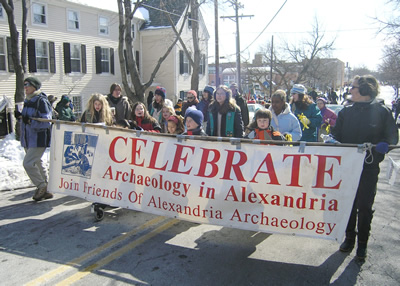
During the 1960s, Washington, DC and its surrounding communities experienced an urban renewal that saw a rebuilding of infrastructure and consequently required the destruction of a number of older buildings in the area. In Alexandria, an independent city a short distance from DC, the destruction of the old buildings uncovered an abundance of historical artifacts that shed light on the history of the area. Realizing that there was a plethora of previously undiscovered, culturally-important artifacts right beneath their feet, the city’s leadership created the Office of Historic Alexandria to try to cultivate and make sense of this new information.
Read more »
Terms:Community Building, Community Engagement, Creative Economy, Cultural Institutions, Heritage, Historic Preservation, IFC Best Practice, Museums, Public-Private Partnerships, Tourism, Washington, DC

Last month the nonprofit group America Achieves released a report titled Geek Cities: How Smarter Use of Data and Evidence Can Improve Lives through their Results for America initiative with support from Bloomberg Philanthropies. The report dissects how leaders in six major cities throughout the United States (and one initiative in London) are using data and technology to improve the lives of their residents. Rapidly improving technology and the digitalization of information has made mass data collection easier than ever, and cities are using this data to find effective programs and measures to combat social, economic, and physical challenges that many face today.
Read more »
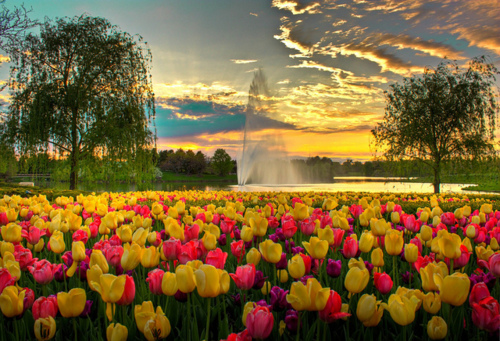
For residents of Chicago’s northern suburbs, the Chicago Botanic Garden is much more than just a collection of colorful plants and flowers. Since it opened more than 40 years ago, the 385 acre grounds have served as an important center for community activity and education. The Garden is home to 26 separate gardens and four natural areas, as well as a conservation science education center and a library with one of the country’s largest collections of botanical books. The grounds are also host to numerous community events and educational courses throughout the year.
Read more »
Terms:Arts & Culture, Chicago, IL, Community Development, Creative Economy, Cultural Institutions, Design, Environment, IFC Best Practice, Institutions as Fulcrums of Change , Parks, Playgrounds & Gardens
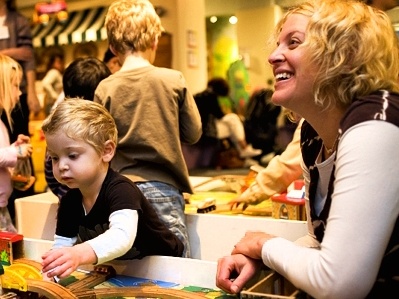
The Habitot Children’s Museum first opened its doors in downtown Berkley in 1998, and the institution has served over 950,000 residents of underserved communities in the Bay Area since. The 7,000 sq. foot facility is home to exhibits that help teach kids about the value of physical activity, water preservation, and art and culture. The hands-on Museum encourages early childhood education and aims to help support a generation of curious and creative kids.
Read more »
Terms:Arts & Culture, Community Building, Creative Economy, Cultural Institutions, Downtown Development, Education, Families, IFC Best Practice, Institutions as Fulcrums of Change , Museums, Youth
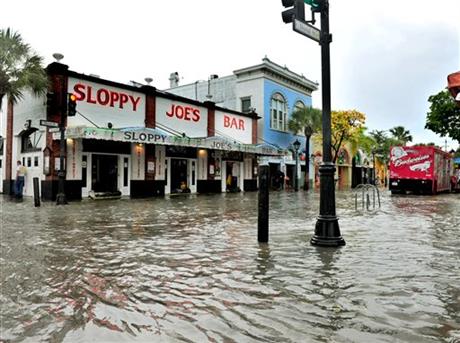
As climate change remains contentious topic in American politics on the federal level, more and more cities are taking it upon themselves to find solutions that will address this growing problem. Key West, Florida, is a popular tourist destination and also one of the most vulnerable places in the United States to rising sea levels. Like many places in South Florida, Key West is very flat, with many neighborhoods, including the downtown hub of tourist activity, reaching no higher than 3 ft. above sea level.
Read more »
Cincinnati Magazine published an article on October 30th outlining the recent history of Wilmington, Ohio. Wilmington, like so many small towns across the country, suffered immensely during the recession. In 2008 the town’s largest employer, DHL Shipping, announced that it planned to end its partnership with Airborne Express, who operated the Wilmington Air Park, and find another U.S. partner. The loss of nearly 10,000 jobs meant the city’s unemployment rate skyrocketed from 3 percent in 2007 to 19 percent by 2010. Wilmington quickly became the face of the recession, and large scale impact the economic downturn had received media attention from many major news outlets, including the New York Times and 60 minutes.
Read more »
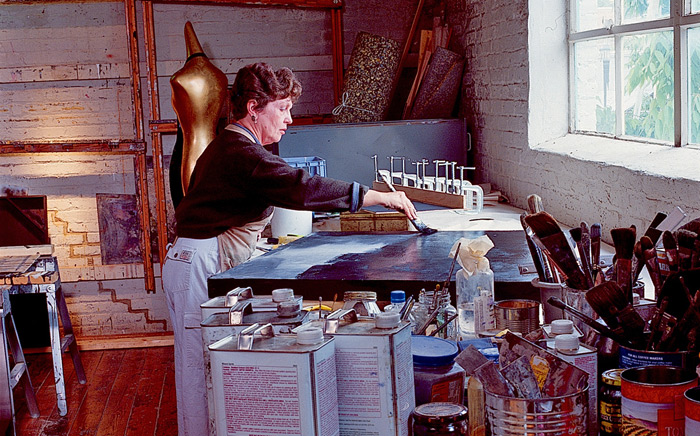
ArtSpace is a national organization, headquartered in Minneapolis, which works to transform communities through the arts. The organization runs 33 affordable, artist-housing facilities throughout the country, in both urban and rural areas, that help improve the livability of their neighborhoods by repurposing old or abandoned buildings to attract artists to live and work in the community.
Read more »

Founded in 2002 in San Francisco, California, 826 is a nonprofit that runs eight writing and tutoring centers for students aged 6-18 nationwide. Each writing and tutoring center provides after-school tutoring at least four days a week, writing workshops to spark students’ interest in the subject, scholarships to helped under-privileged children gain access to a college education, and a variety of other initiatives to help the most at-risk youth further their educational endeavors.
Read more »
Lyz Crane draws on the work of practitioners and researchers to characterize the field of arts-based community development in which arts and culture can help achieve place based change related to the physical, social, and economic dimensions of place. This paper examines the premise that the existence of arts is considered a powerful end in itself, Crane then outlines the variety of ways that the actors and activities involved in arts and community development work can relate to and interact with each other to create sustainable communities. Looking at the cultural ecology of place, creative economy development focuses on fostering local creative businesses and supporting creative workers both in the arts and in supporting industries while cultural development may focus on preserving cultural assets—traditions, language, stories—or on building on them to create stronger, more connected communities. There is also a complex community development ecosystem of organizations, interests, and tools. Stakeholders may involve arts in their agendas, create arts programming, provide or develop arts spaces, employ artists, and/or partner with arts organizations. Indeed, both the arts and community development are part of the same ecosystem and all of these 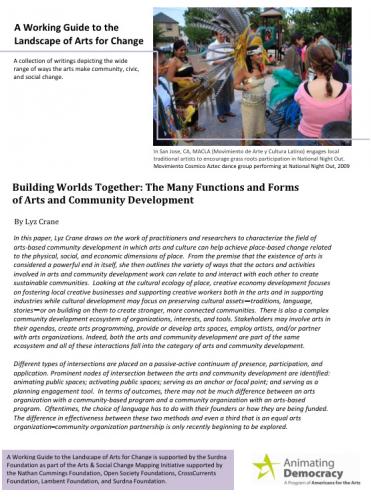 interactions fall into the category of arts and community development. interactions fall into the category of arts and community development.
Crane places different types of intersections on a passive-active continuum of presence, participation, and application. Prominent nodes of intersection between the arts and community development are identified: animating public spaces; activating public spaces; serving as an anchor or focal point; and serving as a planning engagement tool. Crane points out that, in terms of outcomes, there may not be much difference between an arts organization with a community-based program and a community organization with an arts-based program. Oftentimes, the choice of language has to do with their founders or how they are being funded. The difference in effectiveness between these two methods and even a third that is an equal arts organization–community organization partnership is only recently beginning to be explored.
Click here to download the whole document.
Read more »
Terms:2012, Arts & Culture, Business, CBC Report/Publication, Community Building, Community Development, Community Engagement, Creative Economy, Cultural Institutions, Featured, Other Reports/Publications, Placemaking, Public Art, Public-Private Partnerships

By Diana Nash of the Pink Line Project on July 12, 2012
There is a buzzword circulating in the DC arts scene that I had not heard about until I returned to the city two months ago. While the concept of using the arts to spur economic and community development is not new, DC is getting attention for the success of its “Arts and Culture Temporiums” since the first one launched along the H Street NE corridor in 2010. Temporiums fall under the larger category of the Temporary Urbanism Initiative, a project undertaken by the DC Office of Planning. The goal behind the initiative, and more specifically, temporiums, is to activate vacant or underutilized spaces by using them to showcase the talent of local artists and other creative entrepreneurs, along with the retail potential that lies within emerging neighborhoods. Think of them as “Pop Ups” that stay around a little longer and have greater potential benefits for the communities where they take place. Jessica Scheuerman, of Partners for Livable Communities, explains that temporiums allow people to “take risks, explore partnerships, and to commit to something” without the burden of a long-term commitment. Temporiums connect creative people seeking affordable space in their neighborhoods with landlords who have the available space that they haven’t been able to lease. It is a smart and increasingly popular concept that lays the groundwork for longer-term collaboration between property owners and neighborhood entrepreneurs.
Building on the success of earlier temporiums, the Office of Planning is targeting four emerging creative neighborhoods to benefit from a $250,000 grant to the city from ArtPlace, an unprecedented new private-public organization. ArtPlace is part of a national “creative place-making” movement that aims to drive revitalization across the country with arts at the center of economic development. The launch of DeanwoodxDesign marks the next step in the OP/ArtPlace grant initiative.
Read more »
Terms:2012, Announcements, Arts & Culture, CBC Press/Media, Community Building, Creative Economy, Culture Builds Communities, Neighborhood Revitalization, Other Events, Public Art, Washington, DC
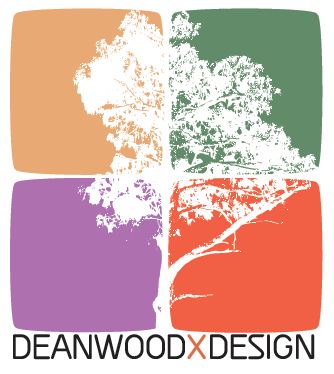 The D.C. Office of Planning (OP) has awarded a $75,000 “ArtPlace Arts and Culture Temporium” grant to Partners for Livable Communities (Partners) to develop and manage temporiums in underutilized spaces in the Deanwood neighborhood, one of the District’s earliest African American communities. The D.C. Office of Planning (OP) has awarded a $75,000 “ArtPlace Arts and Culture Temporium” grant to Partners for Livable Communities (Partners) to develop and manage temporiums in underutilized spaces in the Deanwood neighborhood, one of the District’s earliest African American communities.
Under this grant, Partners will develop and manage DeanwoodxDesign, a project that showcases the rich arts, cultural, historical, and green space assets of Deanwood and Ward 7 through a community-wide, intergenerational, and collaborative effort. This project engages artists and a diverse network of Deanwood institutions and stakeholders to cultivate community pride, showcase and create great art, and invigorate the creative economy.
Read more »
Terms:Announcements, Arts & Culture, CBC Best Practice, CBC Event, Community Building, Community Engagement, Creative Economy, Culture Builds Communities, Design, Multicultural, Neighborhood Revitalization, Placemaking, Public Art, Public-Private Partnerships, Urban, Washington, DC
"So, what is the point of public art? ” This question, posted online by Voice of San Diego's Kelly Bennett, came in response to the city of San Diego’s recent pull from public art funding; after its release on Twitter the post quickly turned viral. Responses to the post ranged from views of public art as superfluous and its place in the public sphere as luxury, to public art as necessary for community well-being, safety, and cohesiveness.
Many of us believe in the arts as integral to the livable community— but when measuring out our federal dollars, the arts are usually the first to go. But what if we could prove that in addition to instilling neighborhood pride and value in our public space, public art could actually serve as a deterrent for crime and violence?
Read more »
Terms:2010, Arts & Culture, Community Building, Community Development, Community Engagement, Creative Economy, Downtown Development, Economic Development, Multicultural, Neighborhood Revitalization, Placemaking, Public Art, San Diego, CA, Urban
Partners’ recent forum with the Hirshhorn Museum, “ Building Livable Communities: Creating a Common Agenda,” served as a positive platform to re-announce a new and exciting agenda for architecture, design, and social experimentation: The Hirshhorn Museum and Sculpture Garden’s Bubble Expansion and book store renovation. Attended by Congressional representatives, federal agencies, think tanks, cultural institutions, and community development leaders alike, Director of the Hirshhorn Museum Richard Koshalek discussed the museum’s upcoming plans. The "Bubble,” as it is called for the short-term, is a joint venture of Koshalek and Diller, Scofidio + Renfro, a renowned New York-based design firm, to re-invent the Museum as an intentional classroom and illustrate intersections of public and private space. Additionally, the museum book store will undergo a transition from a common commercial entity to becoming integrated as a part of museum exhibition space, through a renovation and move to the basement of the building. Perhaps this new agenda comes from the idea that we need to adapt spaces to peoples’ readily changing needs. Perhaps this comes from Richard Koshalek’s desire to make the Hirshhorn a world class modern art museum with a daring new exposition. Perhaps this comes from the need to blur public and private space by incorporating The "Bubble” as an almost space-less entity into a negative, or void, of the concrete mass building; and the book store as an experiment in museum exhibit space. Or perhaps this agenda just comes from a need to make the stolid flimsy, the serious fun, and the patron part of the exhibit.
President of Partners for Livable Communities, Robert McNulty, was quoted in The Wall Street Journal article “ Artists vs. Blight ,” discussing artist occupations of blighted homes and neighborhoods in transitioning communities such as Cleveland and Detroit.
Terms:2010, Arts & Culture, Cleveland, OH, Community Building, Community Development, Creative Economy, Detroit, MI, Economic Development, Housing, Neighborhood Revitalization, Partners Press, Placemaking, Urban, Visioning & Planning
Abandoned properties are encountered with rising frequency in these difficult economic times. Most people simply see them as an eyesore or a threat to security. However, there are some organizations, such as Boston Street Lab and Chashama, which have found this situation to be an opportunity to get a little creative.
Read more »
 This brochure highlights the prevalent issues of today affecting all of our communities and provides concrete examples of the myriad types of institutions that have become “Fulcrums of Change” for the betterment of the people and neighborhoods where they are located.
Read more »
Terms:2009, Aging, Arts & Culture, Community Building, Creative Economy, Cultural Institutions, Families, Health & Wellness, IFC Report/Publication, Institutions as Fulcrums of Change , Multicultural, Partners Reports/Publications, Suburban, Workforce Development
Washington, D.C.
A committee made up of arts, business, and civic leaders dedicated to the cultural development of the Washington, D.C. community.
Read more »
Terms:Arts & Culture, CBC Best Practice, Community Development, Creative Economy, Cultural Institutions, Culture Builds Communities, Downtown Development, Economic Development, Neighborhood Revitalization, Urban, Washington, DC
Boston, MA
A nationally recognized apprenticeship program that empowers artists, giving them the skills and knowledge needed for a successful career in the fine or commercial arts.
Read more »
Terms:Arts & Culture, Boston, MA, Community Development, Creative Economy, Cultural Institutions, Economic Development, Neighborhood Revitalization, Placemaking, Public Art, Social Capital, Urban, Workforce Development, Youth
Pittsburgh, PA
A multi-discipline and minority directed center for arts and learning that employs the visual and performing arts to foster a sense of accomplishment and hope in the urban community.
Read more »
Terms:Arts & Culture, Community Development, Creative Economy, Economic Development, Education, Life-Long Learning, Pittsburgh, PA, Social Capital, Urban, Workforce Development, Youth
Entrepreneurial American Leadership Award
A powerful couple who have worked to transform downtown D.C. into the lively urban center it is today.
Read more »
Terms:2009, Awards, Business, Community Development, Creative Economy, Design, Downtown Development, Entrepreneurial American Leadership Award, Neighborhood Revitalization, Placemaking, Public-Private Partnerships, Tourism, Transportation, Urban, Visioning & Planning, Washington, DC
|
|